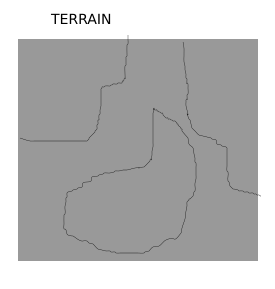I am generating 2D terrain with 2D opensimplex noise, however I am having a problem with the FPS that is low when generating the terrains in TileMap. An example of how my game generates the terrain in javascript:
function generator(map_size=0, _posWorld=[0, 0], size=[1, 48], seed=0) {
var simplex = new SimplexNoise(seed);
var x = 0;
var y = 0;
var pos_modx = 0;
var pos_mody = 0;
while (x < size[0]) {
pos_modx = utilsfunctions.mod(_posWorld[0] + x, map_size);
y = 0
while (y < size[1]){
pos_mody = utilsfunctions.mod(_posWorld[1] + y, map_size);
// GENERATION NOISE
// TEMPERATURE
var nx = parseFloat(pos_modx)/map_size - 0.5;
var ny = parseFloat(pos_mody)/map_size - 0.5;
var v1 = temperature * simplex.noise2D(1 * nx, 1 * ny);
var v2 = 0.4 * simplex.noise2D(2 * nx, 2 * ny);
var v3 = 0.23 * simplex.noise2D(4 * nx, 2 * ny);
var v4 = 0.134 * simplex.noise2D(8 * nx, 8 * ny);
var e = v1 + v2 + v3 + v4;
// HUMIDITY
var unx = parseFloat(pos_modx)/map_size - 0.4;
var uny = parseFloat(pos_mody)/map_size - 0.5;
var u1 = humidity * simplex.noise2D(1 * unx, 1 * uny);
var u2 = 0.6 * simplex.noise2D(2 * unx, 2 * uny);
var u3 = 0.7 * simplex.noise2D(4 * unx, 2 * uny);
var u4 = 0.073 * simplex.noise2D(8 * unx, 8 * uny);
var u5 = 0.09 * simplex.noise2D(16 * unx, 16 * uny);
var u6 = 0.03 * simplex.noise2D(32 * unx, 32 * uny);
var ue = u1 + u2 + u3 + u4 + u5 + u6;
if (pos_modx >= 0 && pos_mody >= 0) && (pos_modx < map_size && pos_mody < map_size) {
tile_map.set_cell(_posTileMap.x + x, _posTileMap.y + y, biomes.solos(e, ue));
}
y += 1;
}
x += 1;
}
The problem is that I am generating several layers of tilemap, one for terrain, one for relief and one for trees. That is three scripts of these, of course for the relief and trees is much less complex, and alone for example, even the two together do not interfere almost anything in the FPS. However, only generating with the above-ground script is already a big problem, and I generate only one minimum possible bit at a time, which is (1, 48) for when moving up or down, and (48, 1) when moving to the right and left, it is clear that there is the case of the diagonal movement, having to generate 48 + 48, which is the worst case. However, even only the 48 are already leaving the FPS bad, nor do I need to move diagonally to feel the FPS suffer.
I would like tips to be able to optimize this generation, and if know any way to use only one algorithm to generate everything (terrain + relief + trees), or any help that can take me to a better way.
Understand why I am generating with 3 different scripts for terrain, relief and trees:
Terrains are large areas within large areas.
Reliefs are crooked lines on the map.
Trees are only points of a dirty noise on the map.




Do you know that you could simplify the above code with for loops?: is that in the other language that is my client the "while" are faster than the "for", the javascript script is from my server nodejs. \$\endgroup\$